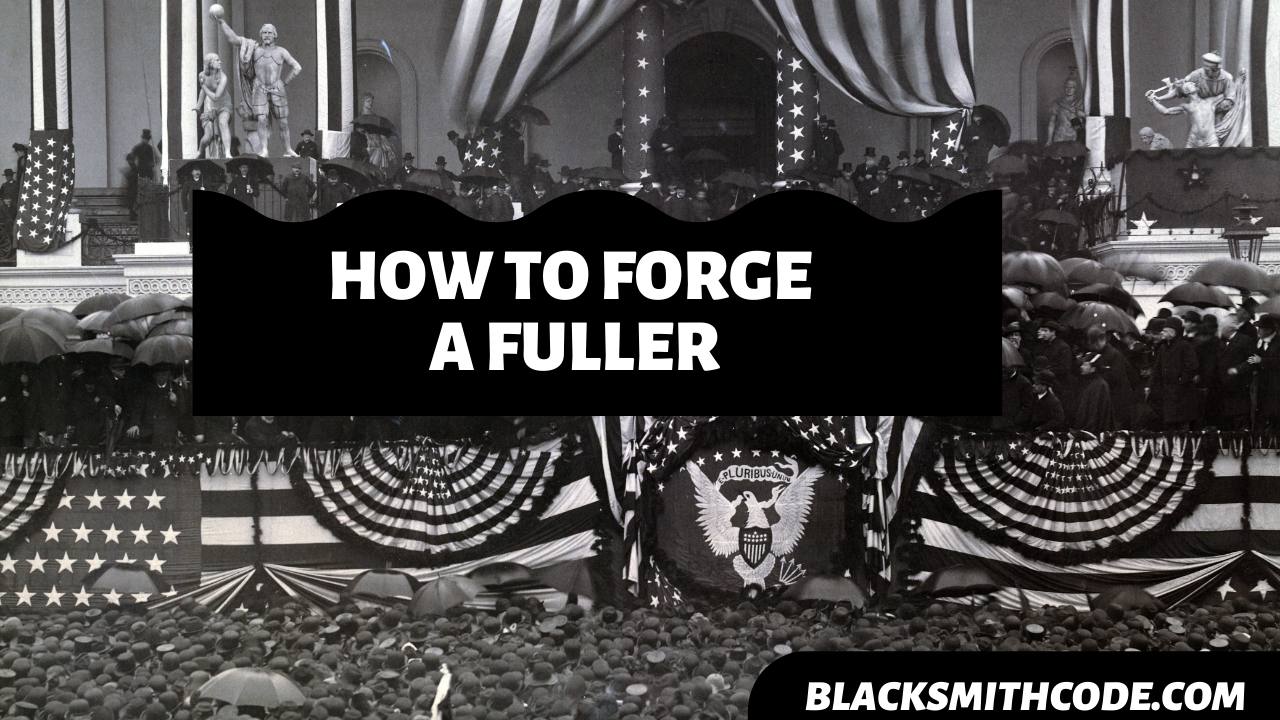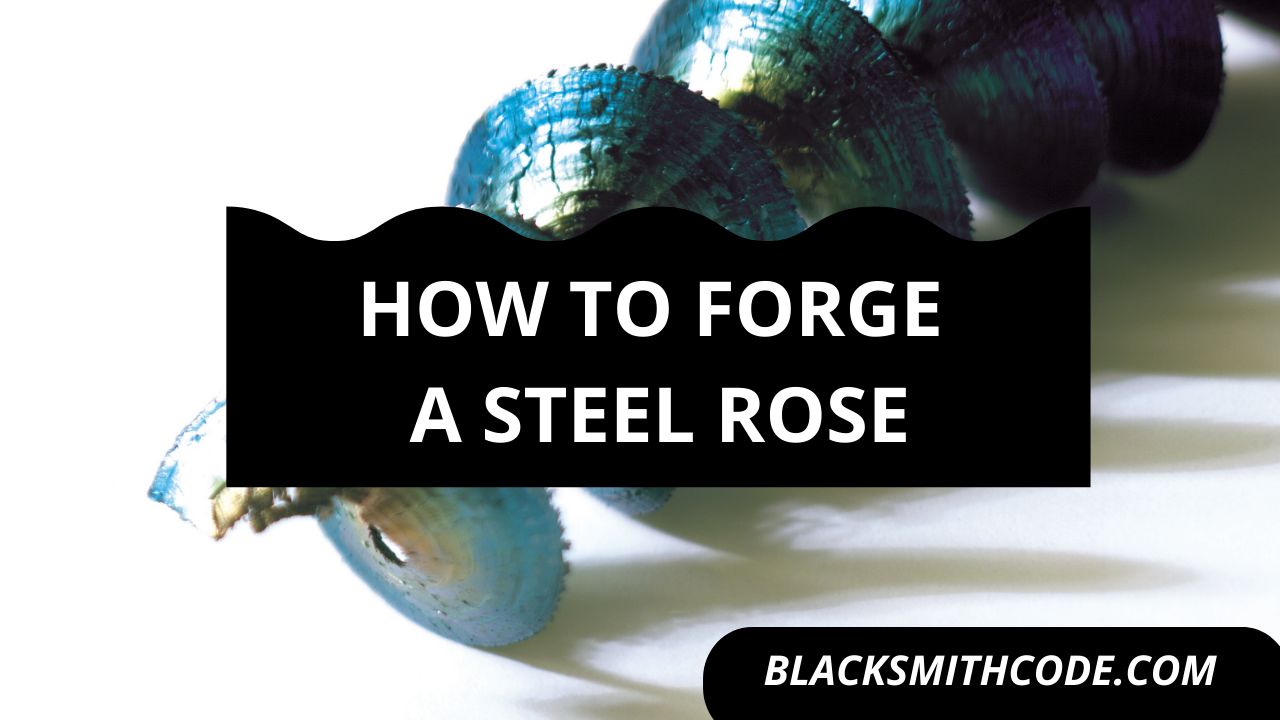Can you forge a fuller? If not, you should follow the given steps to forge yourself a fuller. Steel is one of the main materials used in forging a fuller, making it very easy to forge this material.
A fuller is a beveled or rounded longitudinal slot or groove along the side of the blade. The fuller is mostly useful in lightening the blade instead of allowing blood to flow from the stabbed person.
Some say that it allows easy removal of the blade from the stabbed person by allowing air into the person’s wound. Many blades make use of fullers, though the physical need for it might be negligible.
Forging a fuller seems difficult, but if you follow due steps, there is a high guarantee that you will forge a fuller successfully.
Essentials
Forge
You should get your tools before you start forging. After getting your tools, you should start forging by following the steps and procedures listed below.
Instructions on How to Forge a Fuller
Step 1: Get a Steel Plate for the Blade
The first thing you have to do while learning how to forge a fuller is to get material for the blade. You should get a steel plate that will serve as the blade. The plate should be wide enough to accommodate the forging of a blade.
Step 2: Heat the Plate and Cut Out the Shape of your Blade
After getting the steel plate, you should place the steel plate in a forge for heating. Heat the blade till it becomes red hot, then you cut out the shape of the blade.
You can cut out the shape of the blade using a wheel cutter, hacksaw, jigsaw, etc. It would be easier and more accurate if you marked out the shape outline of the blade on the steel plates.
Step 3: Forge the Fuller into the Blade
Now that you have a rough blade structure, you can now forge the fuller into the blade with the use of a spring swage. To forge the fuller into the blade, you should;
- Heat the blade in a forge until it becomes red hot.
- Insert the spring swage on the anvil.
- Retrieve the blade from the forge with a crucible.
- Place the blade between the tongs of the spring swage.
- Beat the edge of the blade with a hammer.
Pro Tip
When practicing how to forge a fuller, you should make sure the material used to forge it is soft and malleable because of easy forging into the blade. After forging the fuller into the blade, you should proceed to grind your blade.
Step 4: Grind the Blade
To make your blade appear smooth, you have to grind it to give it a more presentable look. To grind the blade, you might want to use a belt grinder or an angle grinder.
You might need to press and move your blade randomly against the grinder’s belt to grind it and remove its rough surface. Make sure you grind the blade the right way. You can also make a series of designs using the grinder.
Step 5: Sharpen the Edges of the Blade
One of the properties of a blade is sharpness and you must keep it in mind while learning how to forge a fuller. The blade should be very sharp, and to sharpen your blade, you have to make use of a grinder or a file.
Step 6: Reheat the Blade
You have to reheat the blade in a forge. You should heat the blade to a very high temperature until it becomes red hot. After heating the blade, you should retrieve the blade from the forge with a crucible.
Step 7: Eliminate the Scales on the Surface
You have to grind the blade once again to remove the scales on the blade. Grinding the blade not only removes scales from the surface of the blade but also adds to the smoothness of the surface.
Step 8: Add the Handle
After having your fuller on your blade, you should get a handle. You can use any type of handle that suits your taste, but a wooden handle is advisable to use.
FAQs on How to Forge a Fuller
Question
Does the fuller aid easy removal of the blade from victims?
According to what people say, it aids easy removal of the blade from the victim. However, there is no practical and experimental proof for this claim. Friction between the muscles of the victim and the blade is what causes how difficult it is to remove the blade, not the fuller.
Question
Is it easy to bevel the fuller into a blade?
Beveling the fuller into the blade can be easy and as well difficult, depending on the type of forging you have been doing. If you are a professional blacksmith with enough tool forging experience, beveling a fuller into a blade should be no problem.
But if you are an amateur in blacksmithing, this might be a little bit difficult for you to carry out.
Question
Can I bevel a fuller into a gold blade?
As long as it is a blade or rather flat, you can bevel a fuller into it. You can as well bevel a fuller into a wooden blade. You can bevel a fuller into a blade irrespective of the material as long as you know how to bevel.
Video on How to Forge a Fuller
Warnings and Precautions
You should take note of safety precautions when forging a fuller. These precautions will keep you away from hazards that occur when forging. These precautions include;
- Always put off every machine when you are not using it.
- Clean up your machines and tools.
- Tidy up your working environment.
- Beware of fire outbreaks.
- Always put on safety apparel.





